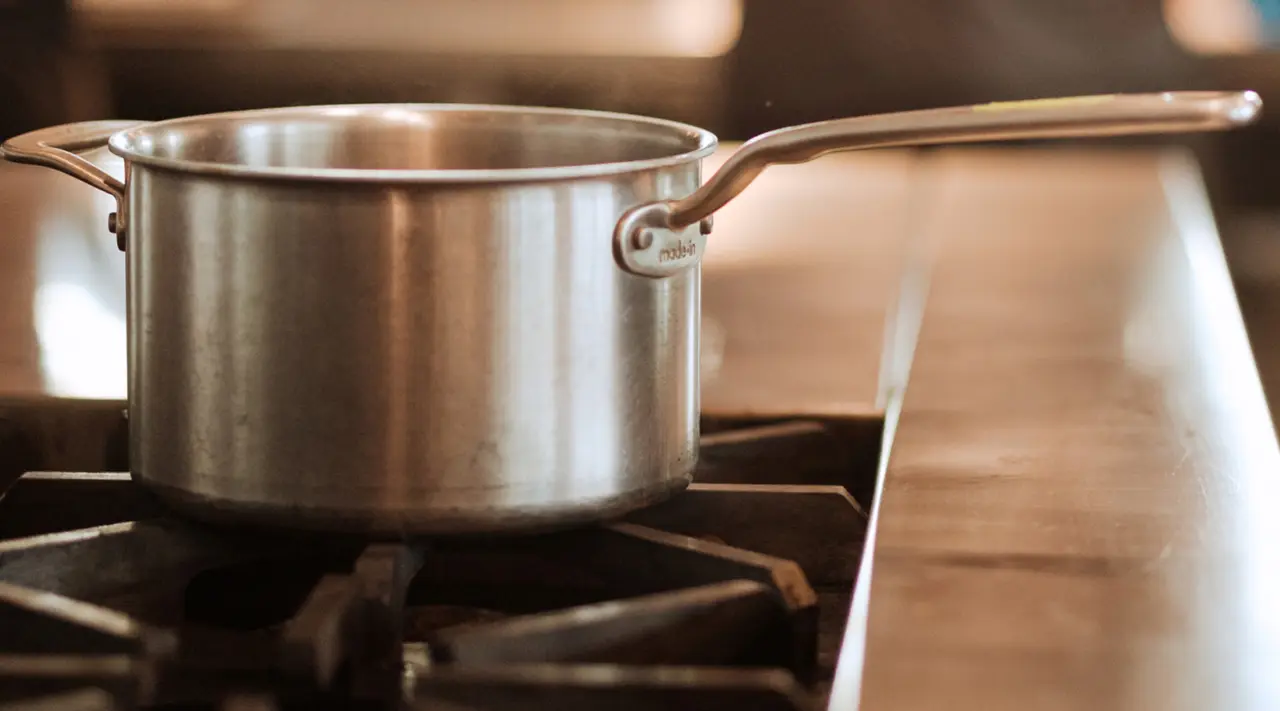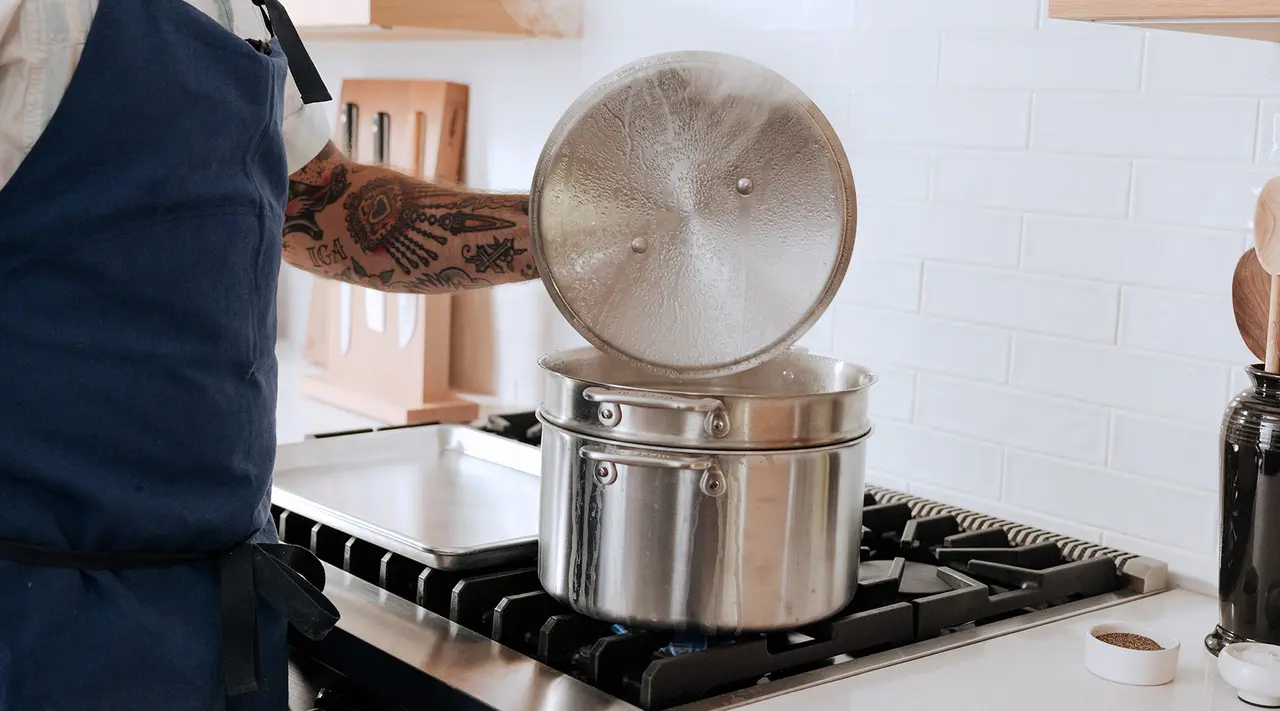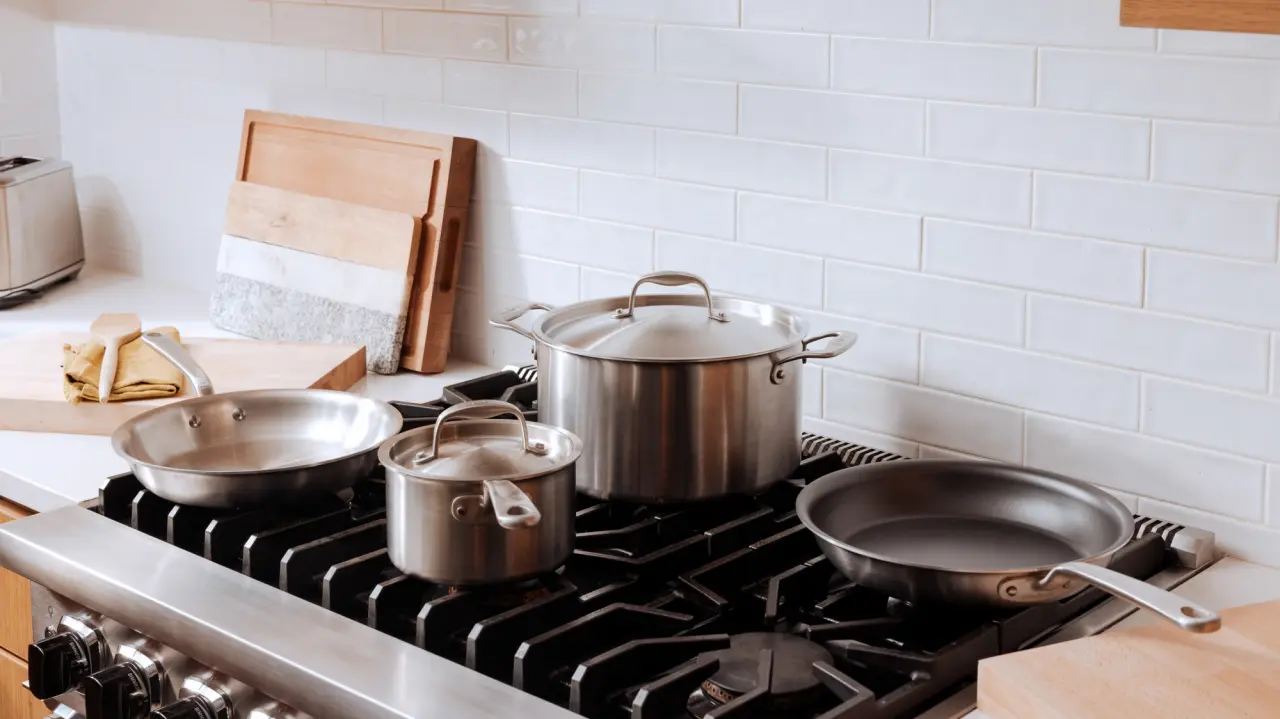Given the astonishing breadth of cookware available to home cooks, finding the right pot for the job can feel overwhelming, and the distinctions between various silhouettes can feel arbitrary.
Because most home cooks typically don’t have the same intuitive, near-encyclopedic knowledge of cookware as professional chefs, we’re sharing a deep dive on the differences between and uses of two essential pieces of cooking equipment: the saucepan and the stock pot.
Both are considered basic, foundational pieces of cookware, but the key differences between saucepans and stock pots are their respective sizes (stock pots are bigger) and their style of handles (stock pots have two short helper handles while saucepans have one long one). But that’s only part of the story—let’s get into it.
What Is a Saucepan?

A saucepan is a relatively small piece of stovetop cookware that comes in a variety of sizes, featuring a round, flat bottom and straight, tall sides. They’re taller than they are wide, and usually include a fitted lid and have a single, long handle to make moving them on and off heat easier. Their narrow design makes them ideal for working with liquids and sauces, so they’re generally used for soups, stews, grains, pastas, gravies, jams, and the like.
Because they are so much smaller than stock pots, they’re better suited to small batches or recipes with a lower yield. Saucepans are frequently constructed from stainless steel, non stick, copper, or aluminum, and because of their versatility are almost always included in cookware sets.
What Is a Stock Pot?

A stock pot is a large piece of cookware typically used for cooking liquid-heavy dishes. They are extremely tall, with straight sides that meet a flat circular base at a 90-degree angle. They come with a lid, feature two small looped handles on either side of the pot, and are most commonly constructed from stainless steel or aluminum.
Due to their size, stock pots lend themselves to batch cooking extraordinarily well. Think large quantities of soup, stew, stock, broth, chili, curry, pasta, or beans, along with techniques like steaming that require a large-volume pot.
What are the Differences Between Saucepans vs. Stock Pots?

Despite their similar roles in the kitchen, there are a few distinctions that separate Saucepans and Stock Pots.
- Size: Stock pots come in much larger sizes than saucepans, clocking in around 8-12 quarts on average (though it’s also possible to find smaller 6 quart options). Like saucepans, they are primarily used on the stovetop, and feature the same round bottom, straight sides, and tall profile. Stock pots are much taller than saucepans, however, primarily to increase their maximum capacity.
- Non stick: While saucepans are frequently offered in non stick variations, it’s less common to see non stick stock pots. This is due to the styles of cooking typically associated with each, and the fact that stock pot cooking usually involves a significant volume of liquid, which greatly minimizes the risk of ingredients sticking.
- Handles: Saucepans have one extended handle that allows the cook to move them quickly on and off heat. Because they are shorter and closer to the heat source, the extended handle is designed to stay cool for longer, thus minimizing the risk of burns. Larger saucepans may come with a smaller, looped "helper handle" on the opposite side of the long handle to make transferring around easier. A stock pot, however, is much too large and unwieldy to have just one handle. Instead, two looped handles jut from either side of the pot’s body, allowing the cook to maintain balance when transporting the pot.
Do You Need Both?

We recommend thinking of these not as competitors, but as complements of a well-stocked cookware arsenal. Having both a stock pot and saucepan on hand makes sure you have all your bases covered, allowing you to make whatever you want. Having just one or the other puts you in the awkward position of constantly adapting recipes to suit what you have, or eliminating entire cuisines from your repertoire.
For example, if you have just a stock pot you would need to scale up all small batch recipes intended for saucepans (like caramel sauce or risotto) to accommodate the much larger dimensions of your Stock Pot. And if you have just a saucepan, you’ll have to scale down every single recipe and commit yourself to never hosting another dinner party. Instead, it’s much simpler to just have one or two of each to ensure that your culinary options are limited only by your personal preferences.
Ready to Shop?
By now you should have a much better understanding of the differences (and similarities) between both saucepans and stock pots. Now that you're well-versed, it's time to decide what material and size you'll need—along with what to make in them.






















